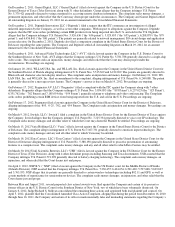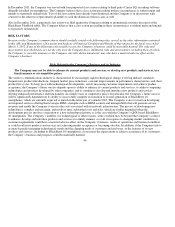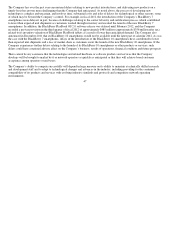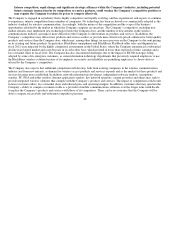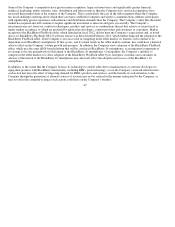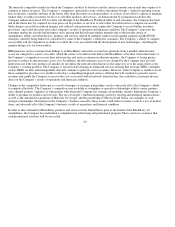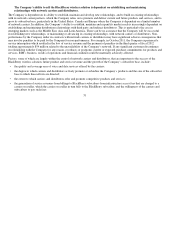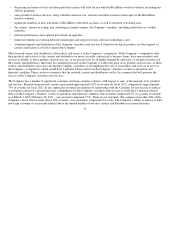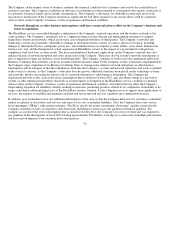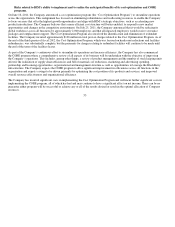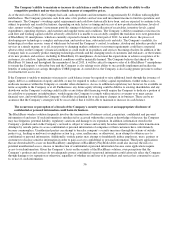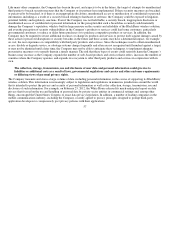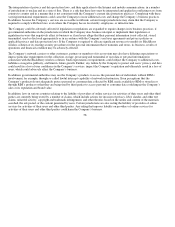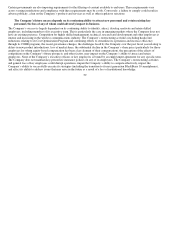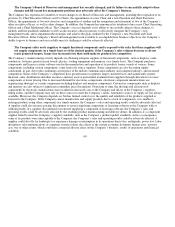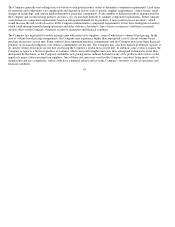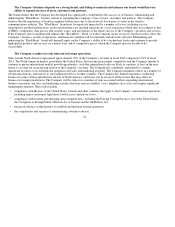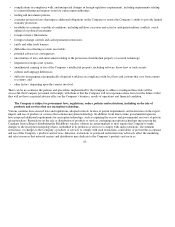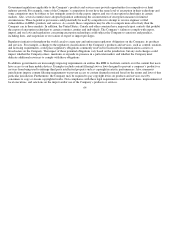Blackberry 2012 Annual Report Download - page 62
Download and view the complete annual report
Please find page 62 of the 2012 Blackberry annual report below. You can navigate through the pages in the report by either clicking on the pages listed below, or by using the keyword search tool below to find specific information within the annual report.
The Company faces substantial inventory and other asset risk.
As the Company develops or announces new products and services, many of its older products and services will reach the end of their
life cycle. In addition, the Company may decide or may be required to discontinue sales of certain products or services, or not pursue
the development of certain products or services, as a result of such factors as expected demand, lower than expected sales, litigation
or government action. As the Company discontinues the manufacturing and sale of these products and services, the Company must
manage the liquidation of inventory, supplier commitments and customer expectations. If the Company is unable to manage properly
the discontinuation of these products and services, it could have a material adverse effect on the Company’s business, results of
operations and financial condition.
The Company must order components for its products and build inventory in advance of product announcements and shipments.
Components are normally acquired through a combination of purchase orders, supplier contracts, open orders and, where appropriate,
prepayments, in each case based on projected demand. Because the Company’s markets are volatile, competitive and subject to rapid
technology and price changes, there is a risk the Company will forecast incorrectly and order or produce excess or insufficient
inventories of components or products. The Company records a write-down for product and component inventories that have become
obsolete, can no longer be sold or exceed anticipated demand or net realizable value, and accrues necessary cancellation fee reserves
for orders of excess products and components. The Company also reviews its long-lived assets for impairment whenever events or
changed circumstances indicate the carrying amount of an asset may not be recoverable. If the Company determines that impairment
has occurred, it records a write-down equal to the amount by which the carrying value of the assets exceeds its fair market value. For
example, the Company recorded a pre-tax provision in the third quarter of fiscal 2012 of approximately $485 million (approximately
$356 million after tax) related to its inventory valuation of BlackBerry PlayBook tablets. The charge, which was predominantly non-
cash, reflected the market environment for the Company’s BlackBerry PlayBook tablet at the time and enabled it to expand upon the
aggressive level of promotional activity employed by the Company to drive BlackBerry PlayBook tablet adoption. In addition, in the
fourth quarter of fiscal 2012, the Company recorded a pre-tax provision of $267 million ($197 million after tax), which was mostly
non-cash, primarily related to its inventory valuation of certain BlackBerry 7 products, based on the Company’s expectations for sell-
through, estimated inventory levels in the channel, and excess inventory on hand. The Company’s financial condition and results of
operations have recently been, and could be in the future, materially and adversely affected by the Company’s ability to manage its
inventory levels and respond to short-term shifts in customer demand patterns. No assurance can be given that the Company will not
incur additional related charges with respect to its existing or future products given the rapid and unpredictable pace of product
obsolescence in the industries in which the Company competes.
54


